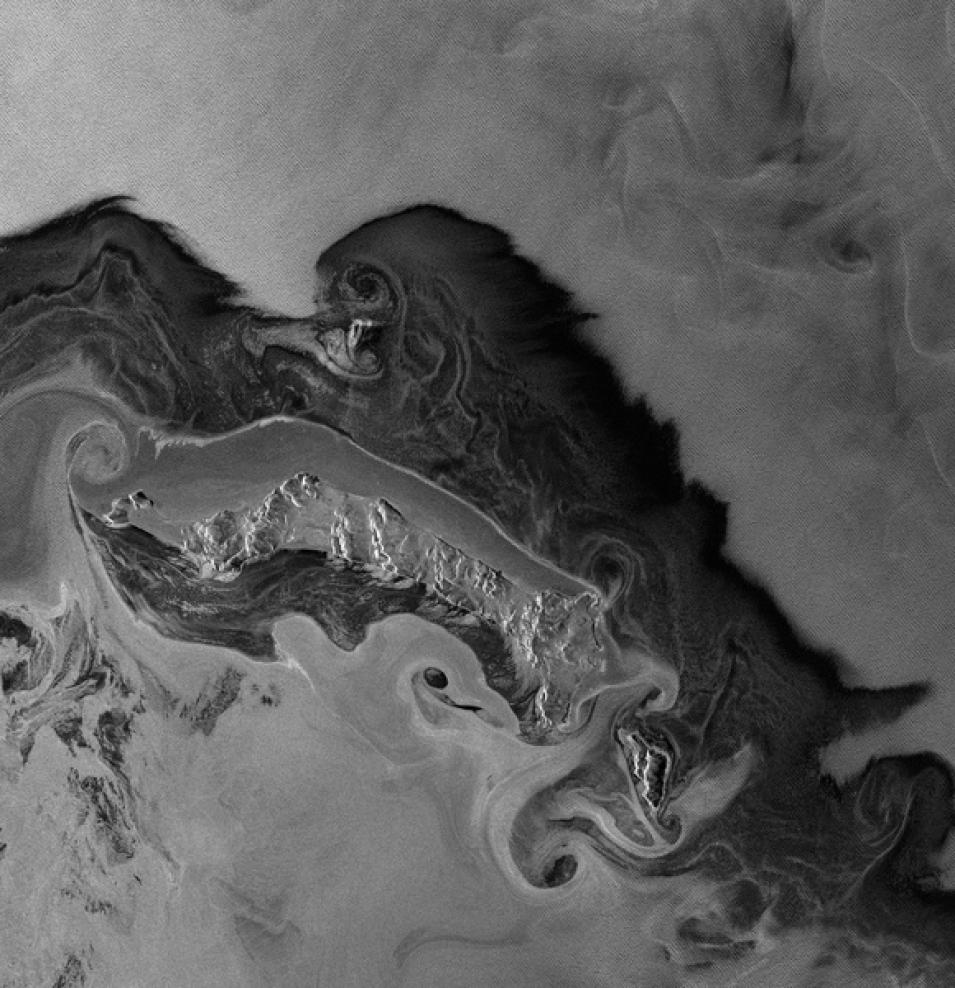Interpretation of synthetic aperture radar (SAR) imagery is not always straightforward, in part because of the non-intuitive, side-looking geometry.
How to View SAR Imagery
Most SAR products are delivered in either CEOS or GeoTIFF file formats. These file formats will not display in both Windows and Mac default image viewers. However, you can view GeoTIFFs in a GIS program. In addition, both GeoTIFF and CEOS images can be viewed using free downloadable software from the Alaska Satellite Facility (ASF) called ASFView. The ASFView tool for SAR image interpretation is included when you download ASF’s MapReady software.
| File Format | Dataset | Needed to View |
|---|---|---|
| CEOS L1 and L1.5 products | ERS-1, ERS-2, JERS-1, RADARSAT-1, ALOS PALSAR | ASFView (included with ASF MapReady) ASF Data Recipes: View and Geocode CEOS Data in ASF MapReady |
| GeoTIFF products | PALSAR RTC Sentinel-1 – Interferograms | ArcGIS, QGIS ASF Data Recipes: View Radiometrically Terrain-Corrected (RTC) Images in ArcGIS and View Radiometrically Terrain-Corrected (RTC) Images in QGIS |
| GeoTIFF products | Terrestrial Ecology, Seasat | ArcGIS, QGIS, ASFView (included with ASF MapReady) |
Image Interpretation
Once you have your imagery, the next step is interpreting what the image is showing. Here are some rules of thumb based on common SAR imagery types.
Water
Regions of calm water and other smooth surfaces appear black (the radar reflects away from the spacecraft).
Wind-roughened water can backscatter brightly in the presence of capillary waves, which occur when the resulting waves are close in size to the incident radar’s wavelength.
In the ESA (European Space Agency) image below of eddies around islands in the Bering Sea (copyright ESA 1992), shades of grey indicate both rough water and ice in various stages of formation.
Dipole eddies swirl in the vicinity of the Bering Sea's Sarichef Strait, between Hall and St. Matthew Islands, in this ERS-1 image acquired on February 15, 1992. The eddies are tidal generated and were observed only when frazil (slush-like ice) and grease ice acted as tracers. Image: Copyright ESA, 1992
Surfaces
Rough surfaces appear brighter, as they reflect the radar in all directions, and more of the energy is scattered back to the antenna. A rough surface backscatters even more brightly when it is wet.
- Surface variations near the size of the radar’s wavelength cause strong backscattering
- If the wavelength is a few centimeters long, dirt clods and leaves might backscatter brightly
- A longer wavelength would be more likely to scatter off boulders than dirt clods, or tree trunks rather than leaves
Slopes
Any slope leads to geometric distortion. Radar signals that return to the spacecraft from a mountaintop arrive earlier or at the same time as the signal from the foot of the mountain, seeming to indicate that the mountaintop and the foot of the mountain are in nearly the same place—or the mountaintop may also appear before the foot. In a SAR image with layover, the mountains look as if they have fallen over toward the sensor. Steeper angles lead to more extreme layover, where mountain tops appear to lay over their base. Layover appears bright.
Geometric distortions are corrected by doing terrain correction. ASF has terrain correction tutorials for both Sentinel-1 and ERS-1 and -2, JERS-1, and RADARSAT-1. PALSAR RTC products are available already radiometrically terrain-corrected.
Hills and other large-scale surface variations tend to appear bright on one side and dim on the other. (The side that appears bright was facing the SAR.) Where slopes are very steep, the dim side may be completely dark because no radar signal is returned at all. This is called shadow. Slope-influenced brightness is corrected by doing radiometric correction. ASF has tutorials which combine radiometric and terrain correction instructions.
Various combinations of polarizations for transmitted and received signals have a large impact on the backscattering of the signal. The right choice of polarization can help emphasize particular topographic features.
Human-Created Structures
In urban areas it is at times challenging to determine the orbit direction. All buildings that are perfectly perpendicularly aligned to the flight direction show very bright returns.
Due to the reflectivity and angular structure of buildings, bridges, and other human-made objects, these targets tend to behave as corner reflectors and show up as bright spots in a SAR image. A particularly strong response—for example, from a corner reflector—can look like a bright dot or a cross in a processed SAR image.
